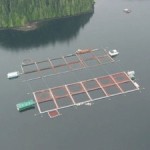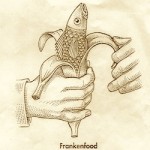I just learned about this from Dr. Mercola’s Healthy Pets website (1). Instead of polluting the earth’s lands and water with more non-compostable plastic bags, you can build a simple composter for your pet’s poop. From the article, you can “compost dog waste (2) in your own yard using a [metal or] plastic trash container. According to [Mike] Levenston [at City Farmer in Vancouver BC], it’s environmentally safe as it slowly decomposes due to septic starter, available at most hardware stores. However, he emphasizes, it’s important to note that composted dog waste should not go into your garden.”
I wonder, will it also work for cat poop from the litter box? Read on, for more…
Building your own pet waste composter
The 2020 Mercola article (1a) provides instructions for a composter that is set in the ground with the lid on top, so the composted material can leach directly into the ground. The composting is aided by adding a septic starter (available at most hardware stores).
Mercola’s 2016 article (1b) discusses using a calculated mix of poop and sawdust, as described by a University of Florida (UF) Extension article (2), which photos. The UF composter sits in a wood frame above ground, and is designed for dumping-over when full. The composted waste can then be added to your flower garden.
Both types can be made from metal or plastic garbage can, and have holes cut/drilled into the sides.
Composting cat litter:
I have two cats, and have often thought about putting the dirty kitty litter in my regular compost pile, but have not done so because of the granular litter into which my cat poops and pees. So when cleaning the litter box, I have always placed the clumps of litter into a biodegradable “Thank You” plastic bag (intended for grocery shopping; see Amazon ASIN B07G7V6JZB for 100 bags).
I do believe these bags are truly biodegradable (many brands are not) because I tested one by filling it with regular non-compostable garbage, and then let it sit on the ground outside for a few weeks. When I picked up the bag, the bottom fell out due to decomposition. So I’m comfortable putting these filled bags in my trash that goes to our local dump.
Unfortunately, the granular litter doesn’t decompose, so I would have to separate the pee and poop from that litter before putting them into a composter. Here’s one way to deal with it (I’ve not yet tested this method):
- Separate poop from litter: this step is easy, as the poop just sits on top of the litter. Simply use a litter scoop to remove the pieces of poop to a biodegradable bag.
- Separate pee from litter: place peed litter in a strainer, then run water over the litter to remove and dilute the pee into a pail. Spread the diluted pee over your lawn or over the ground where shrubs and trees grow.
- Allow the cleaned litter to dry for reuse (I would only reuse it once). After reuse, put it into a biodegradable bag for going to the dump.
References:
- Mercola Healthy Pets: healthypets.mercola.com/sites/healthypets/archive/2020/03/19/dog-waste-digester.aspx
- healthypets.mercola.com/sites/healthypets/archive/2016/08/25/composting-dog-poop.aspx
- Univ. Florida Extension: sfyl.ifas.ufl.edu/sarasota/natural-resources/waste-reduction/composting/what-is-composting/compost-bins/self-contained-compost-bin/



